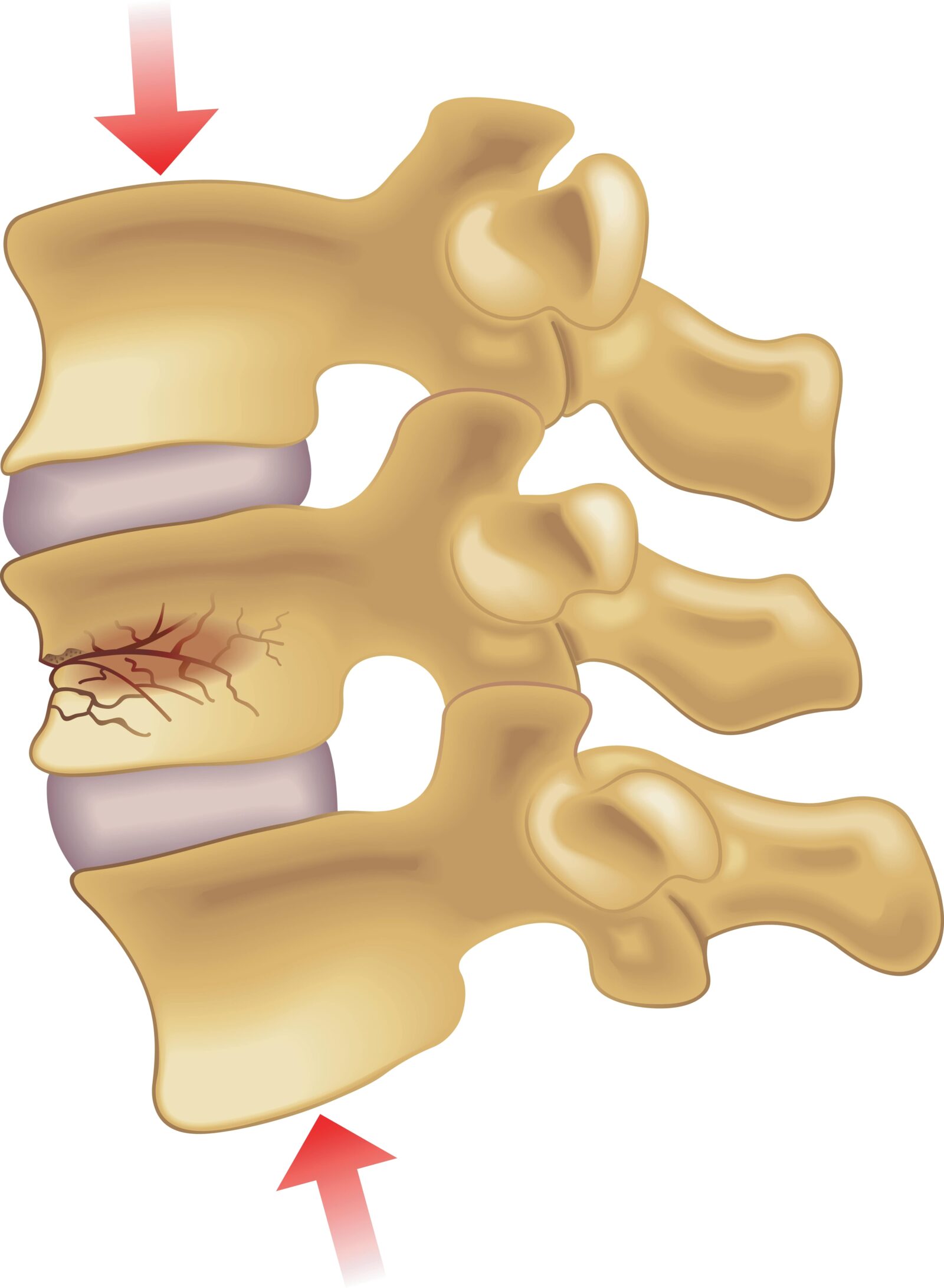Spinal cord injuries can be life-altering events, with far-reaching consequences on an individual’s quality of life. Understanding the top causes of spinal cord injuries and learning how to prevent them is crucial. This blog will explore these causes and provide practical advice on how to minimize the risk of such injuries.
Common Types of Spinal Cord Injuries
The spinal cord is a crucial part of the human body, and injuries to it can be severe and life-altering. The most common types of spinal injuries include:
Contusions (Bruising of the Spinal Cord):
This is the most common type of spinal cord injury. Contusions occur when the spinal cord is bruised but not severed. These injuries can cause swelling and temporary or permanent loss of function.

Compression Injuries:
These injuries result from pressure on the spinal cord. Compression can be caused by fractures or dislocations of the vertebrae, often resulting from traumatic events like falls or vehicle accidents.
Lacerations (Tearing or Cutting of the Spinal Cord):
These are more severe injuries where the spinal cord is partially or completely torn. Lacerations can be due to bone fragments from vertebral fractures or by gunshot wounds.
Central Cord Syndrome:
This condition often occurs after a traumatic injury and involves damage to the central part of the spinal cord. It can lead to loss of function in the arms and hands, while leg function might be less affected.
Anterior Cord Syndrome:
This injury affects the front of the spinal cord and can result in impaired movement and loss of physical sensation below the injury level.
Brown-Séquard Syndrome:
This is a rare spinal cord injury that results from damage to one side of the spinal cord. It causes paralysis and loss of proprioception (sense of body position) on the same side as the injury, and loss of pain and temperature sensation on the opposite side.
Cauda Equina Syndrome:
This occurs when there is damage to the bundle of nerve roots at the lower end of the spinal cord. It can result in lower limb paralysis, loss of bowel and bladder control, and sexual dysfunction.
Complete and Incomplete Spinal Cord Injuries:
A complete spinal cord injury results in total loss of sensation and motor function below the injury level. An incomplete spinal cord injury means there is some remaining function below the level of the injury, which can vary significantly.
Each type of spinal injury has its own set of challenges and potential treatments. It’s important for individuals with spinal cord injuries to receive immediate medical attention and ongoing care from specialists to maximize recovery and adapt to changes in physical function. Rehabilitation, including physical therapy and occupational therapy, plays a crucial role in the recovery process for many spinal injury patients.
Common Causes of Spinal Cord Injuries (And Prevention)
Vehicle Accidents
Vehicle accidents are a leading cause of spinal cord injuries, often resulting from the high-impact forces exerted during collisions. The abrupt jolt or blow can cause the vertebrae to fracture, dislocate, or compress the spinal cord, leading to varying degrees of injury and potential paralysis. To minimize the risk of spinal cord injury in vehicle accidents, it is crucial to adhere to safety measures. Always wear a seatbelt, as it significantly reduces the risk of severe injury by keeping you secured in your seat and preventing ejection from the vehicle. Ensure that your vehicle’s headrests are properly adjusted to support your neck and head, reducing the risk of whiplash in a collision. Drive responsibly, observing speed limits and traffic rules, and avoid distractions such as using a mobile phone while driving. Additionally, investing in a vehicle with advanced safety features like airbags and stability control can offer extra protection in case of an accident. Practicing defensive driving techniques, such as being aware of your surroundings and anticipating potential hazards, can also help in avoiding collisions. By taking these precautions, you can significantly reduce the risk of sustaining a spinal cord injury while on the road.
Falls
Falls, particularly in the elderly and in work environments, are a prevalent cause of spinal cord injuries. These injuries often occur when a person falls from a height, such as from a ladder or through a slip and fall on the same level, leading to trauma to the spine. To minimize the risk, it’s essential to implement safety measures, especially in high-risk areas. In homes and elder care facilities, removing tripping hazards, installing grab bars in bathrooms, and ensuring adequate lighting can significantly reduce the risk of falls. In the workplace, strict adherence to safety protocols, such as using harnesses and guardrails when working at heights, is crucial. Regular training on safety practices and the use of non-slip flooring can also help. For individuals participating in sports, wearing proper protective gear and engaging in balance and strength training exercises can prevent falls. Additionally, maintaining a healthy lifestyle with regular exercise can improve muscle strength and balance, further reducing the likelihood of falls that could result in spinal cord injuries. By addressing these factors, both at home and in the workplace, the risk of falls and consequent spinal injuries can be substantially mitigated.
Sports and Recreation Injuries

Sports and recreational activities, while beneficial for health and well-being, are also common sources of spinal cord injuries, particularly in high-impact or extreme sports. These injuries can occur during activities like football, rugby, diving, skiing, or horseback riding, where the spine can be subjected to forceful impacts, sudden twists, or falls. To minimize the risk of spinal injuries in these settings, it’s vital to use appropriate protective gear. Helmets, neck braces, and spinal protectors can significantly reduce the risk of injury in many sports. Proper training and adherence to safety rules and techniques are also crucial. For instance, learning the correct way to tackle in football or the proper technique for diving can prevent dangerous spinal compressions or awkward landings. It’s equally important to ensure that the environment is safe – such as checking the depth of water before diving and ensuring that playing fields are free of hazards. Warm-up exercises and maintaining overall physical fitness can improve body strength and flexibility, further reducing the risk of injury. Lastly, encouraging a culture of safety among participants and coaches, where players feel comfortable reporting injuries and not feeling pressured to play while injured, is essential in minimizing spinal cord injuries in sports and recreational activities.
Medical or Surgical Complications
Medical or surgical procedures, particularly those involving the spine or the central nervous system, can sometimes lead to spinal cord injuries, although this is less common compared to other causes. These complications may arise due to surgical errors, adverse reactions during surgery, or post-operative complications such as infections or blood clots. To minimize the risk of spinal cord injuries from medical procedures, it’s crucial to seek care from highly qualified and experienced healthcare professionals. Before undergoing any spinal surgery, patients should have a thorough discussion with their surgeons about the risks and benefits of the procedure, including understanding potential complications. It’s also important to follow all pre- and post-operative instructions to reduce the risk of complications. This includes adhering to guidelines about medication, activity levels, and follow-up appointments. Patients should also be proactive in their care by reporting any unusual symptoms or concerns immediately after the surgery. Additionally, advancements in medical technology, such as improved surgical techniques and better imaging methods, continue to reduce the risks associated with spinal surgeries. By taking these precautions and staying informed, patients can help minimize the risk of spinal cord injuries resulting from medical or surgical complications.
Conclusion
While it’s impossible to eliminate the risk of spinal cord injuries entirely, understanding these common causes and following the prevention tips can significantly reduce the likelihood of such injuries. Always prioritize safety in your daily activities and seek professional advice if you engage in high-risk sports or occupations.
Remember, the spinal cord is a vital component of your body, and taking care of it is essential for a healthy, active life. Stay informed, stay safe, and take proactive steps to protect your spine.










